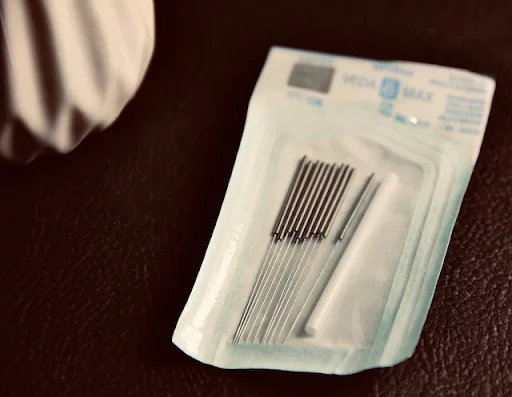It is not uncommon to experience muscular aches and pains, especially as we age or if we push ourselves too far. In most cases, muscle pain or tenderness resolves on its own after a few days or weeks of at-home care.
In some cases, the muscle pain persists and affects the normal function of day-to-day life. In situations of chronic muscle pain, it could be myofascial pain syndrome.
Keep reading to learn more about myofascial pain syndrome and its common treatments.
Chronic Myofascial Pain Syndrome
Myofascial pain syndrome (MPS) is a chronic musculoskeletal pain disorder where pressure on sensitive spots in your muscles (known as trigger points) causes pain in your muscles and sometimes other parts of your body.
The trigger point areas develop in the fascia, a thin band of connective tissue that surrounds and attaches to muscles and internal organs. While myofascial pain and trigger points can develop in any muscle in the body, pain most commonly occurs in muscles found in the upper back, shoulder, and neck.
Chronic Myofascial Pain Symptoms
Symptoms of myofascial pain syndrome are different for everyone. In some instances, the pain happens suddenly and all at once, which is called a flare-up. Other people experience a constant, dull pain that sort of lingers in the background.
These are some of the symptoms of myofascial pain syndrome:
- Deep aching, throbbing, tight, stiff, or vice-like pain
- Trigger points
- Tender/sore muscles
- Muscle weakness
- Reduced range of motion in the affected areas
Additionally, people with MSP often have other health problems that coincide with this disorder. Other common problems include headaches, fatigue, poor sleep, stress, anxiety, and depression.

Chronic Myofascial Pain Causes
Myofascial pain syndrome is caused by a stimulus (like muscle tightness) that sets off trigger points in your muscles. While all of the causes, contributing factors, and pain mechanisms associated with MPS are not exactly known, we do know many of the causes for the trigger points themselves.
Most trigger points occur due to muscle misuse, injury, or psychological stress. They can also occur due to sustained repetitive activity, such as heavy lifting daily at work. The development of myofascial trigger points likely occurs due to a number of contributing factors.
Contributing factors for MSP include the following:
- Bad posture
- Sitting in awkward positions for extended periods
- Nutritional deficiencies
- Lack of exercise/movement
- Injury to the musculoskeletal system or intervertebral disks
- Lack of sleep
- Hormonal changes
- Intense cooling of muscles
- Depression
- Other chronic pain conditions
- Obesity
- Smoking
Myofascial Pain Treatment Options
Treating myofascial pain syndrome typically takes a multipronged approach, combining medications with other therapies that relieve muscle stiffness and pain. The good news is myofascial pain often goes away with proper treatment.
Here are some of the most common myofascial pain treatments, many of which are used in conjunction with one another.
Medications
There are several medications that can help relieve myofascial pain, including over-the-counter (OTC) and prescription options. The most common medications include
- NSAIDs like acetaminophen and ibuprofen
- Analgesics such as lidocaine or tramadol
- Muscle relaxants to reduce spasms
- Anticonvulsants like Gabapentin or pregabalin to reduce pain and spasms
- Tricyclic antidepressants for chronic pain like MPS
- Botox injections to prevent muscle contractions
Consult your doctor before taking any medication and work with them if you feel OTC pain relief may not be enough for your pain.
Trigger Point Dry Needling

Manual Trigger Point Dry Needling is a skilled pain intervention that uses a thin filiform needle to penetrate the skin and stimulate underlying myofascial trigger points. This process deactivates and shuts down the painful or knotted areas in the muscle.
When your PT inserts the needle into the trigger point, it will elicit a local twitch response. This is a brief contraction followed by an immediate and long-lasting relaxation. Dry needling decreases muscle tightness, increases blood flow, and relieves pain.
Physical Therapy
Physical Therapy is a popular treatment option for myofascial pain syndrome. Your physical therapist can help you devise an individualized plan to help relieve your pain based on your signs and symptoms.
Physical therapy for chronic myofascial pain syndrome may include a variety of tactics, such as
- Stretching
- Posture training
- Massage therapy
- Heat therapy
- Ultrasound therapy
Additionally, your physical therapist can help you find the right exercises to help, as your pain allows.
Other Treatment Options
Here are other treatment options for MPS, including some you can do at home:
- Ultrasound
- Wet needling
- Heat
- Relaxation techniques like yoga and meditation
- Dietary changes to avoid inflammatory foods
- Soaking in warm water
Find Myofascial Pain Treatment at Mid-County Physical Therapy
Chronic myofascial pain can lead to a multitude of long-term health problems, both physical and mental. The best thing you can do if you are suffering from MPS is to get treatment right away.
Avoid ongoing problems and improve your quality of life with the help of our expert team. Make an appointment at Mid-County Physical Therapy today to learn more about trigger point dry needling and other myofascial pain treatments we offer!


